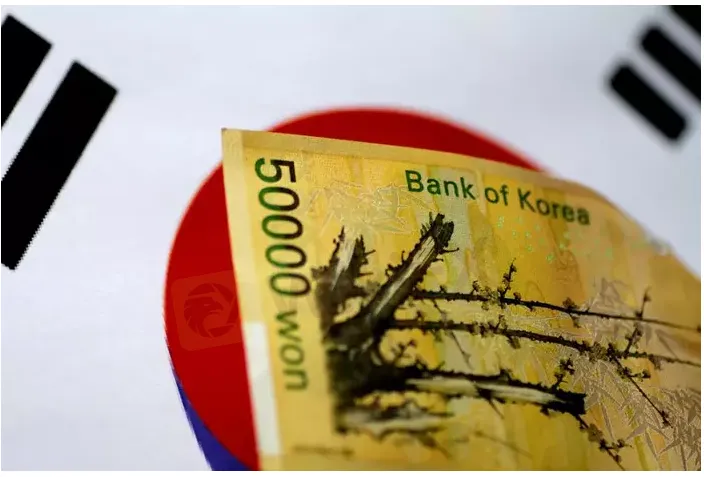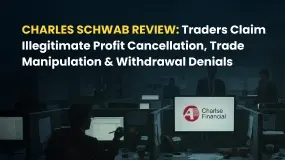简体中文
繁體中文
English
Pусский
日本語
ภาษาไทย
Tiếng Việt
Bahasa Indonesia
Español
हिन्दी
Filippiiniläinen
Français
Deutsch
Português
Türkçe
한국어
العربية
Analysis-S.Korea’s huge pension fund a local force driving won lower
Abstract:South Korea’s strenuous attempts to defend a sharply weakening currency have run into an unstoppable home-made force working in the opposite direction: the national pension fund.

The National Pension Service (NPS), the worlds third-largest such fund, has a hefty and growing appetite for equity and bond investment abroad, which it can feed only by selling won for foreign currency.
It made net purchases of about $10 billion of foreign bonds and stocks in the first five months of 2022, central bank data shows. As a cause of won sales this year, its activity came on top of a record first-half trade deficit of $10.36 billion and the $12.53 billion that foreign investors had pulled from the countrys stock market by June.
All this downward pressure has made the won the worst performer against the U.S. dollar among currencies of emerging Asian economies this year. Its losses exceed 9%.
“Apart from global factors, such as high oil prices, for 90% of the time in recent weeks it was continued outflows by the NPS that took the won down,” said a foreign exchange dealer at a local bank.
“It is not worries about the health of the Korean economy that pushed the won down. The NPS has basically raised the dollar/won level with a skewed demand for dollars from the onshore market.”
Created in 1988, the NPS is the main public retirement plan of Asias fourth-largest economy.
It manages 919.6 trillion won ($702.03 billion) of assets, equivalent to about 40% of annual gross domestic product. Being so large relative to the local economy, it has had to be aggressive in investing abroad, where it has also seen higher returns.
As the fund works to meet the retirement needs of the worlds fastest-aging population, finance and central bank officials have no authority to direct it to keep more money at home.
Moreover, the fund offsets little of its demand for foreign currency with hedging, which it limits to 5% of the value of its foreign assets.
Asked to comment on the outsized role it now plays in the onshore currency market, the NPS said it was “flexibly responding to market conditions by strategically hedging foreign exchange risks, since a rise in the dollar/won rate adversely affects the return on newly bought overseas assets.”
Structural headwind
South Koreas foreign exchange authorities are unhappy as the won, currently hovering near a 13-year low, is on course for its biggest annual decline in 14 years. Perched on the weaker side of 1,300 per dollar, the currency is at levels previously seen only during economic crises.
The Bank of Korea made net dollar sales of $8.31 billion to curb the wons fall in the first quarter alone.
Downward pressure from NPS won sales will only grow, because the fund will keep expanding and so will foreign assets share of its portfolio. It plans to hold 50% of its assets abroad by 2024, up from 44% at the end of last year and 27% five years ago.
That, on top of the trade deficit and Korean retail investors growing appetite for foreign stocks, could force the won into a long-term downward trend, officials say.
“As the NPS consistently raises its foreign investment ratio, structural depreciating pressure (on the won) may follow,” a Bank of Korea board member said during a May monetary policy meeting.
A finance ministry official said: “As the NPS is one big player in the market, it should think hard about how to reduce its impact when it considers the timing of (dollar) purchasing and how it buys.”
Even the U.S. Department of Treasury has noticed the growing influence of the NPS.
In its bi-annual currency report, the department cited the increase of the fund‘s foreign assets “by around 60 billion won in 2021,” or by 37%, predominantly driven by valuation changes. It was a rare mention of local, not international, factors behind the won’s decline.
At least one-quarter of the increase resulted from purchases of stocks and bonds, a Reuters calculation shows.
($1 = 1,309.9100 won)

Disclaimer:
The views in this article only represent the author's personal views, and do not constitute investment advice on this platform. This platform does not guarantee the accuracy, completeness and timeliness of the information in the article, and will not be liable for any loss caused by the use of or reliance on the information in the article.
Read more

Charles Schwab Review: Traders Claim Illegitimate Profit Cancellation, Trade Manipulation & More
Have you been lured into the Charles Schwab app for trading on the back of outrageous profit claims by the broker? Did you fail to receive any of these? Does the broker deny withdrawals every time you request and cancel your forex trading account? Have you been victimized financially by its trade manipulation? Act before you are left with a NIL balance in your account. Many traders have questioned Charles Schwab customer service and many other operational executives for the aforementioned illegitimate trading activities. In this Charles Schwab review article, we have shared some of their comments. Read on!

AMP Futures Exposed: Traders Raise Alarms Over Illegitimate Account Blocks & Bad Customer Service
Has AMP Futures blocked your forex trading account? Does it fail to provide any explanation for this act? Do you face issues concerning deposits to your AMP Futures account? Is the customer service non-existent for any trading query you raise with it? You are not alone! Many traders have been facing these issues upon AMP Futures login. Some of them have commented on AMP Futures review platforms. In this article, we have shared some reviews that you can look at. Read on!

FXGlory Review: Vanishing Profits, Capital Scams & Withdrawal Charges Keep Annoying Traders
Does FXGlory remove all your forex trading account balances upon fund withdrawal requests? Or do you witness incorrect trading account balances after fund withdrawals? Does the Saint Lucia-based forex broker charge you for fund withdrawals? All these and many more scam-related complaints have been filed against the forex broker. In this FXGlory review article, we will discuss several complaints. Read on!

PINAKINE Broker Review: A Complete Look at Its Services and Risks
Finding a trustworthy broker from the huge and often confusing world of online trading options is one of the biggest challenges a trader faces. In this competitive market, PINAKINE Liquidity Limited has appeared, getting attention with promises of high leverage and zero-commission trading. However, a closer look shows important factors that every potential client must think about before investing. The most important thing to consider with PINAKINE is that it has no regulation. This fact completely changes how risky the broker is and has major effects on how safe your investments will be. This review gives a complete and fair examination based on information available to the public. We will break down its services, trading conditions, platform technology, and the possible risks involved, helping you make a fully informed decision.
WikiFX Broker
Latest News
Private payrolls rose 42,000 in October, more than expected and countering labor market fears, ADP says
Yields Rise, Rate-Cut Odds Slide As ISM Services Survey Signal Inflation Fears
Op-ed: The fuel for the AI boom driving the markets is advertising. It is also an existential risk.
Stonefort Broker Review 2025: Legit or Risky? A Complete Analysis
He Thought It Was a Crypto Investment; It Cost Him RM1.2 Million
CHINA BEST Broker Review: Regulation and Risks
Uniglobe Markets Review 2025: A Safe Broker or a High-Risk Scam?
Chicago Fed's Goolsbee says he's cautious about further rate cuts during shutdown
These Are Europe's Top Economies By Projected 2026 GDP
Quantower Review 2025: User Reviews and Complaints in India
Currency Calculator




